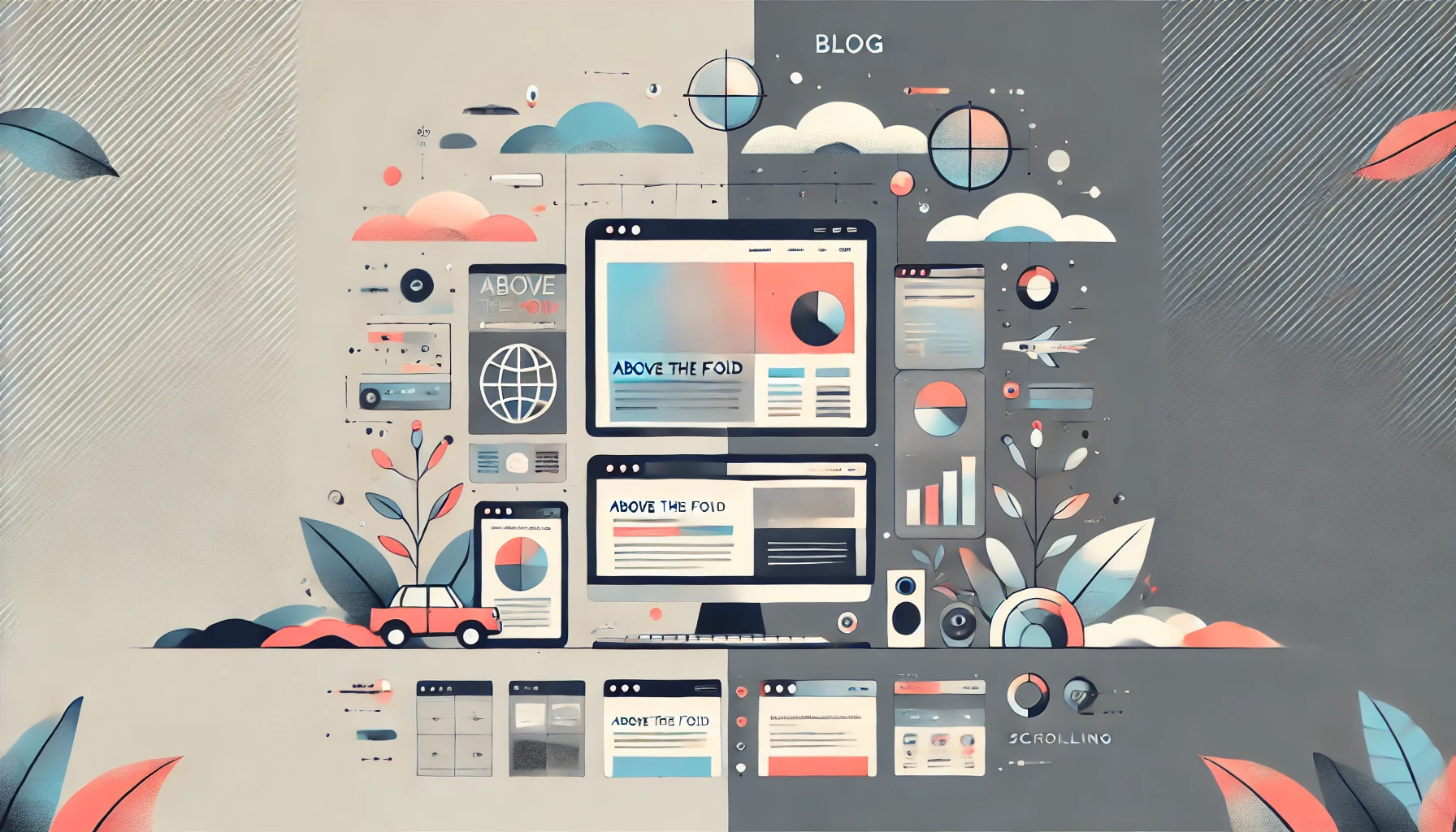Is 2024 the death of “Below the Fold”?
Below the Fold : Why It’s Time to Shift Your Focus
For decades, the concept of “above the fold” has dominated web design and content strategy. Originating from the world of print newspapers, where the most important stories were placed on the upper half of the front page to capture attention, this concept has long influenced how digital content is prioritized.
The idea was simple: content that appears on the first screen without scrolling is the most critical, as users are less likely to scroll down.
However, as we move deeper into 2024, this traditional wisdom is increasingly becoming outdated. In a world where user behavior has evolved, and technology has advanced, the obsession with what lies “below the fold” is no longer as critical as it once was. Here’s why.
The Rise of Infinite Scrolling and Mobile Design
With the majority of web traffic now coming from mobile devices, the way users interact with content has changed dramatically.
Infinite scrolling, popularized by social media platforms, has conditioned users to continuously scroll without concern for what’s immediately visible. In fact, many users now expect to scroll to find more content and even enjoy the process.
On mobile devices, the concept of “fold” is fluid—different screen sizes and resolutions mean that what’s “above the fold” on one device may not be on another.
As a result, designers and content creators are focusing more on creating engaging experiences that encourage users to explore the entire page rather than trying to cram everything important into the top section.
User Engagement Over Content Placement
The key to successful content in 2024 is engagement, not placement.
Modern analytics tools allow us to track exactly how users interact with content, revealing that users who are genuinely interested will scroll, click, and engage with content regardless of where it’s located.
Rather than focusing solely on the top portion of a webpage, the emphasis should be on creating high-quality, engaging content that resonates with the audience throughout the entire page.
This shift in focus aligns with the broader trend towards personalized and interactive content. Whether it’s through videos, interactive elements, or dynamic content that changes based on user behavior, the goal is to keep users engaged, regardless of where the content sits on the page.

What below the fold nonsense is this?
SEO and Content Quality Trump Page Placement
Search engines have evolved to prioritize the quality and relevance of content over its placement on a page.
Google’s algorithms, for example, are more concerned with the value and relevance of the content to the user’s query than whether it appears above or below the fold.
This means that content creators should focus on SEO best practices and delivering valuable content that meets user intent, rather than worrying about its placement on the page.
In fact, over-optimizing for above-the-fold content can sometimes lead to a poor user experience, as it can result in cluttered, overwhelming designs that drive users away.
A balanced, well-structured page that guides users through the content naturally is far more effective in retaining their attention and achieving conversion goals.
Design for User Experience, Not Outdated Rules
Designers today have a wide array of tools and techniques at their disposal to create immersive, user-friendly experiences.
Modern web design focuses on user experience (UX) as a whole, rather than adhering to outdated rules like the “above the fold” obsession.
For instance, micro-interactions, smooth transitions, and the strategic use of whitespace can encourage users to explore a page more thoroughly.
By creating a journey that feels intuitive and rewarding, users are more likely to engage with content below the fold. Additionally, the use of sticky headers, floating navigation buttons, and other design elements ensures that important calls-to-action (CTAs) remain accessible, no matter where users are on the page.
Adapting to Changing User Behavior
Finally, it’s important to recognize that user behavior continues to evolve. What worked in web design five years ago might not be as effective today.
The focus should be on understanding your audience and adapting to their preferences rather than relying on outdated practices.
Continuous testing, analyzing user behavior, and iterating on design and content strategies are crucial to staying ahead in the ever-changing digital landscape.
Wrapping it up. Time for a beer
In 2024, the obsession with what lies above and below the fold is increasingly becoming a relic of the past.
As user behavior shifts and technology advances, it’s clear that engaging, high-quality content and a strong user experience are what truly matter. By focusing on creating content that resonates with your audience and designing pages that encourage exploration, you can ensure that your website remains effective and relevant in the modern digital world.

I have been lied to my whole life !!!!!! Damn you FOLD .. DAMN YOU !!
FAQs
1. What does “above the fold” mean in web design?
“Above the fold” refers to the portion of a webpage that is visible without scrolling. It is a concept borrowed from print newspapers, where the most important content was placed on the upper half of the front page.
2. Is “below the fold” content still important in 2024?
Yes, content below the fold is still important. With changes in user behavior, especially on mobile devices, users are more likely to scroll and engage with content throughout the entire page.
3. Should I prioritize content placement above the fold?
While it’s important to place critical content in prominent positions, the focus should be on creating a seamless user experience and engaging content, rather than strictly adhering to above-the-fold placement.
4. How has mobile usage impacted the concept of “the fold”?
Mobile devices have made the concept of “the fold” more fluid, as screen sizes and resolutions vary. Users are also more accustomed to scrolling, making the fold less relevant.
5. What should I focus on instead of the fold?
Focus on creating high-quality content, improving user experience, and ensuring that your content is engaging and relevant. Use modern design techniques to guide users through your page naturally.



